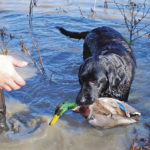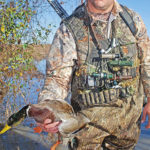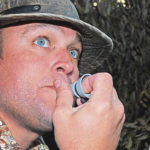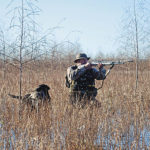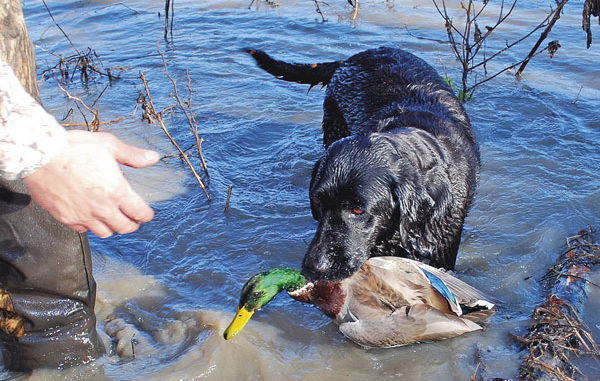
WRP stands for Wetlands Reserve Program, but those who put it into action think the name should have something to do with ducks.
Kaploosh!The big greenhead’s splashdown sounded like a pickle bucket hitting the water. After Pearl, Drew Keeth’s 7½-year-old black lab delivered the handsome bird to hand, Keeth added it to slings already groaning with bluewing teal, greenwing teal, gadwall, pintails, wigeon, another mallard and thrown in for variety, a couple of shovelers.
It was the middle of the second week of the first split of the 2009-2010 duck season. Hunters weren’t killing many ducks in South Louisiana and hunters in North Louisiana were experiencing a lackluster season as well.
Where were we?
In Central Louisiana, about 10 miles south of Jonesville, on flooded Wetlands Reserve Program land on Louisiana Delta Plantation. Our hunt wasn’t just lucky. Both weekends prior to my arrival, hunters cashed in on the farm’s bonanza. And the year before, when duck hunting success in the rest of Louisiana could only be considered disappointing, Louisiana Delta Plantation held a minimum of 500,000 ducks. That’s a half-million birds, on maybe 13,000 flooded acres.
My exposure to Louisiana Delta Plantation came when Charlie Ferrington, a Louisiana Department of Wildlife and Fisheries game warden, introduced me to the 34-year-old Keeth, who carries the title of recreation manager for Louisiana Delta Plantation.
Keeth, a Jonesville native, lives, eats and breathes ducks. His cell phone rings with mallard quacks; his personalized truck license plate is DUCKTRK.
“I love the outdoors,” he says with reverence. “I got into guiding to have places to hunt. All the best places were leased for pay-hunts, so I started guiding for tips in Concordia Parish.
“I was still working other jobs, and soon it got to where the guiding was conflicting with the jobs, and I needed to give up one or the other. I had been in contact with the previous owner of Louisiana Delta Plantation and checked cotton for him. I also hunted on the plantation a couple of times a year, so I was familiar with it.
“Then Michael and Ron Johnson bought the place six years ago. Three years later, I began working for them. I lease duck blinds, manage blind locations and manage water levels. And I am in charge of moist-soil management for the owners.”
When Ferrington, his cousin Justin Cowan and I met Keeth at 5 a.m., the weather conditions were not promising. Not a breath of wind stirred and the brilliant stars of the Milky Way overhead promised a bluebird day. But Keeth’s confidence was contagiously high. The Honey Brake area of the property, the lowest ground on the plantation, always seems to hold ducks, he explained.
The boat ride to the blind in the mud motor-powered boat was short, but Keeth’s three passengers saw little of it. Pieces of dry coffee bean plants, shattered by the speeding boat’s hull, peppered their faces. Keeth, who was standing, was above the fusillade.
The mostly roofed blind located in a small clump of short trees in a low place in the field was a spacious 10 by 12 feet in size, and was perched on 5-foot stilts. Pearl took her place on the porch, but obviously didn’t like the slippery wooded steps.
Shooting hours came slowly, far too slowly for the amped-up Ferrington.
“Listen to all those pintails and mallards on the water to the right,” he said in awe. “Look at that flight overhead,” he added breathlessly.
As Ferrington’s excitement built, his good friend Keeth steadily picked on him about his shooting ability, his calling skills, his choice of shotguns — you name it. Cowan simply listened to the two with a grin on his face.
All the picking just whetted Ferrington’s edge
Finally, 6:16 arrived.
“It’s legal; it’s time to start shooting,” Ferrington proclaimed, while stuffing shells in his autoloader.
Immediately, he and Cowan started blasting the dive-bombing teal. A couple of shovelers, including one perfectly plumaged drake, also fell in the onslaught.
Keeth put only one bird on the water before he had to get out of the blind to help Pearl, who was still intimidated by climbing the slippery stairs to the blind, and couldn’t keep up with the numbers of downed birds. With Keeth in the decoys, the shooting slowed, but every time he walked around to the rear of the blind, out of sight of the decoys, the plucky little ducks returned.
“Y’all might want to slow down, because the big ducks are going to fly later and you won’t have any limit left,” cautioned Keeth from behind the blind.
The two men paused, and Keeth clambered up the steps of the blind with two fistfuls of ducks.
While the men, by and large, held fire, both species of teal, as well as shovelers, seemed hell-bent to tease the men into shooting. While the shooting slowed, the teasing and camaraderie in the blind didn’t.
“Just how big are you,” I asked the mountainous Cowan. Six-8 and about 300 was his reply.
Keeth snorted, “Yeah, maybe when you’re nekkid and after doing Jenny Craig a while.”
A pair of big ducks passed over the blind, catching Ferrington with his face exposed. They flared off.
“Gah, Charlie pie-faced them!” said Keeth in mock disgust.
Ferrington shook his head and admitted his sin.
A half hour after shooting began, the sun’s rays beamed over the browns and yellows of the flooded terrain.
“All this was cleared and planted in soybeans during the soybean craze of the 1960s, Keeth said. “Hundreds of thousands of acres of prime bottomland hardwood were just pushed into piles and burned to plant more beans.
“Honey Brake is so low that it probably should never have been cleared in the first place.”
Within the panoramic view of Honey Brake from the blind, many other various-sized clumps of trees similar to the one the blind is in could be seen.
“Those,” explained Keeth, “are the lowest places in Honey Brake. The farmers gave up farming those first.”
Pintails, gadwall and wigeon began to appear over the decoys. First to connect on a fat drake pintail was the giant Cowan. Next to connect, also on a drake pintail, was Keeth, who made an awkward over the left shoulder shot. Interspersed with the pintails were gadwall and wigeon.
A mixed flock of birds gave Ferrington his chance for a pintail, which he promptly took advantage of by smacking a drake with one shot.
“I picked that sprig out,” he said excitedly as he retired to the back of the blind, his limit filled.
When Pearl delivered the bird, Ferrington was set for more hazing by Keeth. Neither of the pins in the tail were developed yet. Keeth took full advantage of the opportunity, disparagingly comparing the young bird to the two adults taken earlier.
Ferrington’s enthusiasm never flagged.
“I’ve had a jamb-up hunt. I enjoyed that,” he said with excitement crackling in his voice.
Then, the mallards started to fly. Not just singles and pairs, but flocks as well. The limits quickly filled, first Cowan’s, then Keeth’s, then mine. With our limits filled, mallards began landing in the decoys unmolested.
Twenty four birds, including four pintails, hung from a post in the blind, mysteriously labeled with a marker as “the green post.” On one wall of the blind, a hunter from a time past also used a marker to record the harvest from the blind hunt after hunt.
The warm pleasure of a successful hunt flooded my body as I left the blind. Thoughts of the long-gone hunter with the marker stuck in my mind until the boat stopped at the levee.
